
Santa María: The Heartbeat of Cádiz
Explore Santa María in Cádiz: A historic neighbourhood rich in flamenco culture, culinary delights, and vibrant streets, perfect for a captivating Andalusian experience.
Santa María is a vibrant and historic neighbourhood nestled in the heart of Cádiz, Spain. Known for its charming narrow streets, colourful facades, and rich cultural heritage, this area is a must-see for any visitor. The neighbourhood is steeped in history, with roots tracing back to the Roman and Moorish periods. Walking through Santa María feels like stepping back in time, where every corner tells a story of centuries past. One of the highlights of Santa María is its lively atmosphere. The neighbourhood is famous for its flamenco culture, and you can often hear the passionate strains of flamenco music echoing through the streets. The area is home to several traditional flamenco bars and clubs, where you can experience live performances that capture the soul of Andalusian culture. In addition to its cultural offerings, Santa María boasts a range of culinary delights. The neighbourhood is dotted with tapas bars and seafood restaurants, offering fresh local produce and traditional dishes. Whether you're looking for a casual bite or a fine dining experience, Santa María has something to satisfy every palate. Santa María is also conveniently located near some of Cádiz's top attractions, including the Cathedral of Cádiz and the Roman Theatre. This makes it an excellent base for exploring the wider city. The neighbourhood's central location means that you are never far from the beach, adding a touch of coastal charm to your visit.
Local tips in Santa María
- Visit during the evening when the flamenco clubs come alive with music and dance.
- Try the local tapas and seafood, especially the fresh catch of the day at nearby restaurants.
- Wear comfortable shoes; the cobblestone streets can be tricky to navigate.
- Take a guided walking tour to fully appreciate the neighbourhood's rich history and hidden gems.
- Check out the local markets for unique souvenirs and fresh ingredients.
Santa María: The Heartbeat of Cádiz
Santa María is a vibrant and historic neighbourhood nestled in the heart of Cádiz, Spain. Known for its charming narrow streets, colourful facades, and rich cultural heritage, this area is a must-see for any visitor. The neighbourhood is steeped in history, with roots tracing back to the Roman and Moorish periods. Walking through Santa María feels like stepping back in time, where every corner tells a story of centuries past. One of the highlights of Santa María is its lively atmosphere. The neighbourhood is famous for its flamenco culture, and you can often hear the passionate strains of flamenco music echoing through the streets. The area is home to several traditional flamenco bars and clubs, where you can experience live performances that capture the soul of Andalusian culture. In addition to its cultural offerings, Santa María boasts a range of culinary delights. The neighbourhood is dotted with tapas bars and seafood restaurants, offering fresh local produce and traditional dishes. Whether you're looking for a casual bite or a fine dining experience, Santa María has something to satisfy every palate. Santa María is also conveniently located near some of Cádiz's top attractions, including the Cathedral of Cádiz and the Roman Theatre. This makes it an excellent base for exploring the wider city. The neighbourhood's central location means that you are never far from the beach, adding a touch of coastal charm to your visit.
Iconic landmarks you can’t miss
Catedral de la Santa Cruz de Cádiz
Explore the stunning Catedral de la Santa Cruz de Cádiz, a magnificent blend of architectural styles and a symbol of the city's rich history.

Torre Tavira
Explore the historic Torre Tavira in Cádiz, a captivating landmark offering stunning views and rich maritime history in one of Spain's most beautiful cities.

Castillo de Santa Catalina
Discover the stunning Castillo de Santa Catalina in Cádiz, a historical castle offering breathtaking ocean views and fascinating maritime history.

Castillo de San Marcos
Explore the historical Castillo de San Marcos, a medieval fortress in El Puerto de Santa María, offering stunning architecture and breathtaking views.

Oratorio de la Santa Cueva
Explore the Oratorio de la Santa Cueva in Cadiz, a stunning monument showcasing baroque architecture and captivating artworks that reflect the city’s rich cultural heritage.
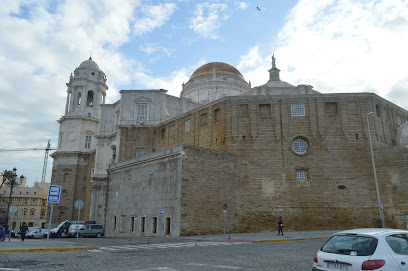
Puerta del Barrio de Santa María
Discover the enchanting Puerta del Barrio de Santa María, a historical landmark in Cádiz, where rich heritage meets stunning architecture.

Puertas de Tierra
Explore Puertas de Tierra in Cádiz, a historic landmark that embodies the rich culture and heritage of this beautiful coastal city.

Playa Santa María del Mar
Explore the beauty and tranquility of Playa Santa María del Mar, a stunning beach destination in Cádiz, perfect for relaxation and cultural experiences.

Mirador de Santa María del Mar
Experience the stunning views and serene atmosphere at Mirador de Santa María del Mar, a must-visit attraction in the heart of Cádiz, Spain.
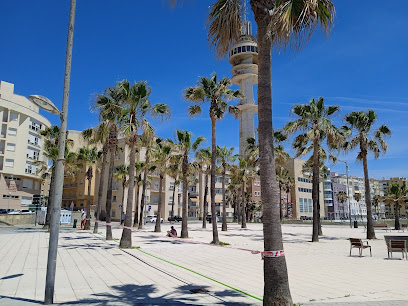
Baluarte de Santa María
Discover the historic Baluarte de Santa María in Cádiz, a majestic fortress offering stunning sea views and rich military history.

Baluarte De Santa Elena
Discover the historic Baluarte De Santa Elena, an iconic fortress in Cádiz showcasing stunning architecture and breathtaking coastal views.
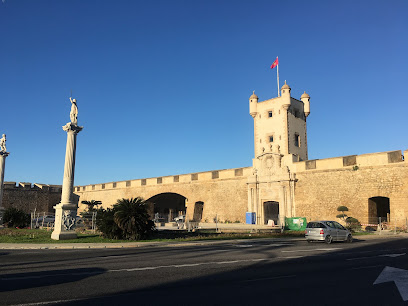
Unmissable attractions to see
Los Toruños Natural Park
Explore the breathtaking landscapes and diverse wildlife at Los Toruños Natural Park, a natural haven in Cádiz perfect for hiking and family outings.
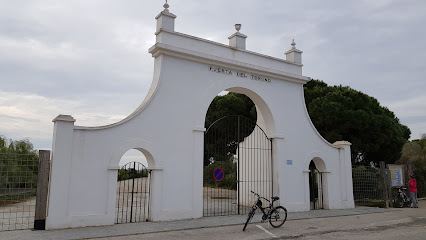
Castillo de San Marcos
Explore the stunning Castillo de San Marcos in El Puerto de Santa María, a historical fortress showcasing rich maritime heritage and breathtaking views.

Museo del Títere
Experience the whimsical world of puppetry at Museo del Títere, a unique cultural gem in Cádiz showcasing diverse puppet art and craftsmanship.

Puerto Sherry Lighthouse
Experience breathtaking views and rich maritime heritage at Puerto Sherry Lighthouse, a must-visit coastal gem in El Puerto de Santa María.

Fuente de las Galeras
Explore the historic Fuente de las Galeras in El Puerto de Santa María, a beautifully restored fountain surrounded by vibrant gardens and rich cultural heritage.

Playa Santa María del Mar
Experience the tranquil beauty of Playa Santa María del Mar in Cádiz, where golden sands and clear waters await your arrival.

Mirador de Santa María del Mar
Discover the breathtaking views of the Atlantic from the Mirador de Santa María del Mar in Cádiz, a must-visit scenic attraction for all travelers.

Baluarte de Santa María
Explore the historic Baluarte de Santa María in Cádiz, a magnificent fortress that offers stunning ocean views and a deep dive into maritime history.

Cádiz Centro Comercial Abierto
Explore the vibrant Cádiz Centro Comercial Abierto, where shopping, dining, and culture come together in an enchanting open-air setting.
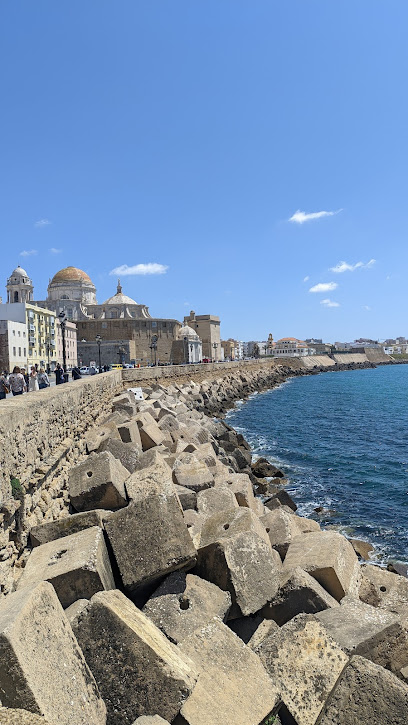
Essential places to dine
Taberna El tío de La Tiza
Discover authentic Spanish cuisine at Taberna El Tío de La Tiza in Cádiz - where tradition meets flavor in every dish.

Restaurante El Aljibe
Experience authentic Mediterranean flavors at Restaurante El Aljibe in Cádiz, where traditional tapas meet contemporary dining.

Restaurante MUSALIMA
Discover exquisite Mediterranean and vegan cuisine at Restaurante MUSALIMA in Cádiz, where culinary excellence meets breathtaking seaside views.

Restaurante La Chancha y los 20
Experience the vibrant flavors of Argentina at Restaurante La Chancha y los 20 in Cádiz - where tradition meets culinary artistry.

Restaurante Fogón de Mariana - Antulo
Experience authentic Andalusian flavors at Restaurante Fogón de Mariana in Cádiz - a perfect spot for families and food enthusiasts.
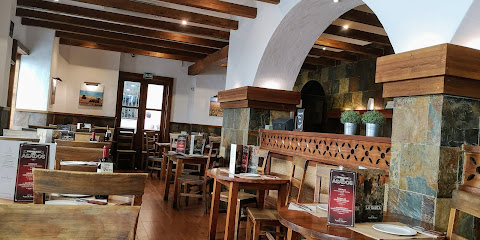
Restaurante D'Cortés
Experience authentic Spanish cuisine at Restaurante D'Cortés - a vibrant tapas bar in Cádiz known for its delicious dishes and warm hospitality.

Alamar
Experience the best of Mediterranean cuisine at Alamar, Cádiz's top seafood restaurant offering fresh dishes and authentic Spanish flavors.
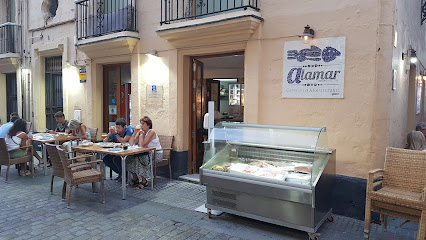
Restaurante Salicornia Cadiz
Experience the best of Andalusian cuisine at Restaurante Salicornia in Cádiz - where tradition meets innovation.

Candilazo
Experience the best of Andalusian cuisine at Candilazo - where every bite tells a story amidst the charm of Cádiz.

Casa Antonio El Del Palillo
Experience authentic Andalusian cuisine at Casa Antonio El Del Palillo in Cádiz - where every meal tells a story.

Markets, malls and hidden boutiques
ALE-HOP
Discover ALE-HOP in Cádiz: Your go-to gift shop for unique souvenirs and local crafts that capture the spirit of Spain's coastal gem.

Museum-store of Cadi-Cadi
Explore the Museum-Store of Cadi-Cadi in Cádiz for authentic souvenirs and local art that capture the essence of Andalusian culture.

La Capsula
Discover unique fashion at La Capsula, a premier clothing store in Cádiz, blending local flair with contemporary styles for every taste.
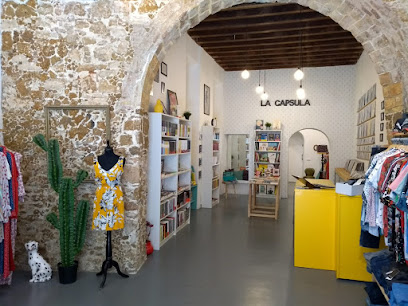
Calvichi's
Discover the charm of Cádiz at Calvichi's, your ultimate destination for unique souvenirs, trendy apparel, and delightful local crafts.

Natura
Explore Natura, the charming gift shop in Cádiz, for unique clothing and souvenirs that embody the spirit of the region.

Libertaria
Explore Libertaria, a vintage clothing store in Cádiz, offering unique apparel, antiques, and local crafts to enhance your travel experience.

Spagnolo
Discover contemporary fashion and local craftsmanship at Spagnolo, Cádiz's premier clothing store, where style meets culture.
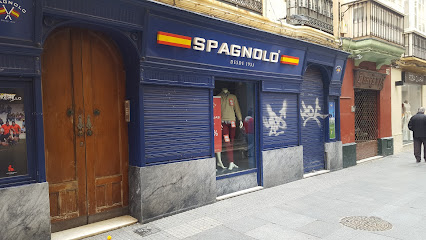
TripMilenaria Museum Store
Discover unique souvenirs and local crafts at TripMilenaria Museum Store in Cádiz, a treasure trove for travelers seeking authentic experiences.

La Santa Streetwear & Art Gallery
Explore La Santa Streetwear & Art Gallery in Cádiz, where contemporary fashion meets local art in a vibrant shopping experience.
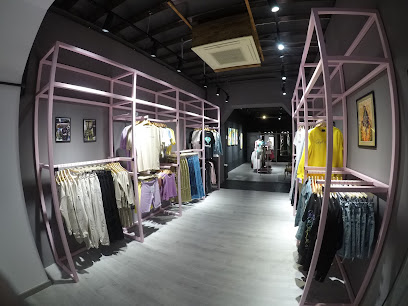
Reino del Universo
Discover the vibrant flavors of Cádiz at Reino del Universo, your go-to grocery store for local delights and fresh produce.

Essential bars & hidden hideouts
TK3 Playa
Experience the vibrant beach atmosphere of TK3 Playa, where refreshing cocktails and stunning ocean views create unforgettable memories in El Puerto de Santa María.

El Tinte Superbar - Cádiz
Experience the lively atmosphere of El Tinte Superbar in Cádiz, where delicious food meets vibrant music in a unique bar and restaurant setting.

Bar Ajolá
Experience the vibrant atmosphere and authentic flavors at Bar Ajolá, a must-visit bar in the heart of Cádiz.

Savage Bar
Experience the vibrant nightlife of Cádiz at Savage Bar, a lively piano bar offering unforgettable live music and a welcoming atmosphere.

The Alameda Kioskito
Discover a vibrant cocktail oasis at The Alameda Kioskito in Cádiz, where expertly crafted drinks and a lively atmosphere await every visitor.

Pub La Batería
Discover the vibrant atmosphere and local flavors at Pub La Batería in Cádiz, a must-visit pub for a memorable nightlife experience.
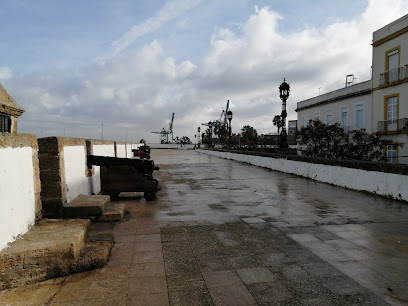
El Tascón De Arturo
Experience the charm of Cádiz at El Tascón De Arturo, a cozy bar offering authentic tapas and local drinks in a welcoming atmosphere.

El Rincón del Capitán
Experience the vibrant nightlife of El Puerto de Santa María at El Rincón del Capitán, a cocktail bar offering exceptional drinks and a lively atmosphere.
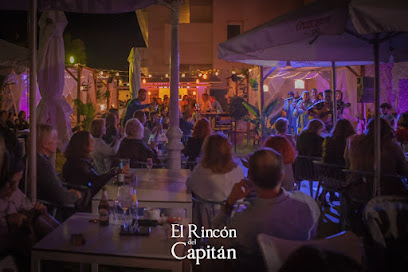
La Flaca - El Puerto de Santa María
Experience the lively atmosphere of La Flaca in El Puerto de Santa María, a top pub for cocktails and late-night fun in Cádiz.

Jazz Café
Discover the vibrant atmosphere of Jazz Café in Cádiz, where live music meets delectable tapas and exceptional local drinks.

Local Phrases
-
- HelloHola
[oh-la] - GoodbyeAdiós
[ah-dee-ohs] - YesSí
[see] - NoNo
[noh] - Please/You're welcomePor favor/De nada
[por fah-vor/deh nah-dah] - Thank youGracias
[grah-thyahs] - Excuse me/SorryPerdón/Lo siento
[pair-dohn/loh see-ehn-toh] - How are you?¿Cómo estás?
[koh-moh ehs-tahs] - Fine. And you?Bien. ¿Y tú?
[bee-ehn. ee too] - Do you speak English?¿Hablas inglés?
[ah-blahs een-glehs] - I don't understandNo entiendo
[noh ehn-tyehn-doh]
- HelloHola
-
- I'd like to see the menu, pleaseMe gustaría ver el menú, por favor
[meh goo-stah-ree-ah behr ehl meh-noo, por fah-vor] - I don't eat meatNo como carne
[noh koh-moh kahr-neh] - Cheers!¡Salud!
[sah-loohd] - I would like to pay, pleaseMe gustaría pagar, por favor
[meh goo-stah-ree-ah pah-gahr, por fah-vor]
- I'd like to see the menu, pleaseMe gustaría ver el menú, por favor
-
- Help!¡Ayuda!
[ah-yoo-dah] - Go away!¡Vete!
[beh-teh] - Call the Police!¡Llama a la policía!
[yah-mah ah lah poh-lee-see-ah] - Call a doctor!¡Llama a un médico!
[yah-mah ah oon meh-dee-koh] - I'm lostEstoy perdido/a
[ehs-toy pair-dee-doh/dah] - I'm illEstoy enfermo/a
[ehs-toy ehn-fehr-moh/dah]
- Help!¡Ayuda!
-
- I'd like to buy...Me gustaría comprar...
[meh goo-stah-ree-ah kohm-prahr...] - I'm just lookingSolo estoy mirando
[soh-loh ehs-toy mee-rahn-doh] - How much is it?¿Cuánto cuesta?
[kwan-toh kwehs-tah] - That's too expensiveEsto es demasiado caro
[ehs-toh ehs deh-mah-syah-doh kah-roh] - Can you lower the price?¿Puedes bajar el precio?
[pweh-dehs bah-har ehl preh-see-oh]
- I'd like to buy...Me gustaría comprar...
-
- What time is it?¿Qué hora es?
[keh oh-rah ehs] - It's one o'clockEs la una
[ehs lah oo-nah] - Half past (10)Media (10)
[meh-dee-ah (dhez)] - MorningMañana
[mah-nyah-nah] - AfternoonTarde
[tahr-deh] - EveningNoche
[noh-cheh] - YesterdayAyer
[ah-yehr] - TodayHoy
[oy] - TomorrowMañana
[mah-nyah-nah] - 1Uno
[oo-noh] - 2Dos
[dohs] - 3Tres
[trehs] - 4Cuatro
[kwah-troh] - 5Cinco
[seen-koh] - 6Seis
[sehs] - 7Siete
[syeh-teh] - 8Ocho
[oh-choh] - 9Nueve
[nweh-veh] - 10Diez
[dyehth]
- What time is it?¿Qué hora es?
-
- Where's a/the...?¿Dónde está...?
[dohn-deh ehs-tah] - What's the address?¿Cuál es la dirección?
[kwahl ehs lah dee-rehk-see-ohn] - Can you show me (on the map)?¿Puedes mostrarme (en el mapa)?
[pweh-dehs mohs-trahr-meh (ehn ehl mah-pah)] - When's the next (bus)?¿Cuándo es el próximo (autobús)?
[kwan-doh ehs ehl proh-ksee-moh (ow-toh-boos)] - A ticket (to ....)Un billete (a ....)
[oon bee-yeh-teh (ah ....)]
- Where's a/the...?¿Dónde está...?
History of Santa María
-
Santa María, one of the oldest neighbourhoods in Cádiz, has roots that extend back to the Phoenician and Roman periods. The area was originally settled by the Phoenicians, who established the port of Gadir around 1100 BC. Archaeological remains indicate that this neighbourhood served as a vital hub for trade and commerce, benefiting from its strategic coastal location.
-
During the 18th century, Cádiz flourished as a major trading port, particularly with the Americas. Santa María became a lively area filled with merchants, sailors, and a burgeoning population. The construction of grand houses and palaces reflected the wealth generated by trade. This period also saw the establishment of various cultural institutions, contributing to the vibrant life of the neighbourhood.
-
The early 19th century was marked by turmoil due to the Peninsular War (1808-1814). Cádiz and Santa María played a crucial role as a bastion of resistance against Napoleonic forces. The Cortes de Cádiz convened in 1810, leading to the drafting of the Spanish Constitution of 1812, a significant moment in Spanish history that emerged from the heart of this neighbourhood.
-
By the mid to late 19th century, Santa María became a melting pot of diverse cultures, influenced by the influx of immigrants and the continued prosperity of the port. This era saw the establishment of various cultural traditions, including the famous Cádiz Carnival, which is one of the most renowned in Spain, reflecting the neighbourhood's rich heritage and the joy of its inhabitants.
-
The 20th century brought significant social changes to Santa María, particularly during and after the Spanish Civil War (1936-1939). The neighbourhood witnessed economic hardships and demographic shifts, with many families leaving for better opportunities. However, revitalization efforts in the late 20th century helped restore its historical architecture and cultural significance, making it a vibrant part of modern Cádiz.
Santa María Essentials
-
Santa María is centrally located in Cádiz and can be easily reached from other neighbourhoods by walking or using public transport. The main train station, Estación de Cádiz, is nearby, making it convenient for travelers arriving by train. Local buses also connect Santa María with other parts of the city, providing a cost-effective and efficient means of transportation.
-
Santa María is a walkable neighbourhood, with many attractions and amenities within easy reach on foot. For longer distances, local buses (CTC) operate frequently, and taxis can be hailed on the street or booked via phone. Bicycles can be rented from various shops in the area, and cycling is a pleasant way to explore the charming streets.
-
Santa María is generally a safe neighbourhood for tourists; however, standard precautions should be taken. Avoid areas that appear deserted at night and be cautious of pickpockets in crowded places, such as markets and public transport. While there are no specific crime hotspots, it is wise to stay vigilant, especially around tourist attractions.
-
In case of emergency, dial 112 for immediate assistance. Local hospitals and clinics are available throughout Cádiz, and pharmacies can provide over-the-counter medications. It is highly recommended to have travel insurance that covers medical emergencies. For non-urgent matters, the local police station is accessible for guidance.
-
Fashion: Do dress comfortably but modestly, especially when visiting religious sites. Avoid overly casual or beachwear outside of the beach areas. Religion: Do respect local customs and traditions. Always show reverence in churches. Public Transport: Do give up your seat to elderly passengers; don’t eat or drink on public transport. Greetings: Do greet locals with a friendly 'Hola' and a smile. Eating & Drinking: Do try tapas and local wine; don’t refuse food offerings, as it can be seen as disrespectful.
-
To experience Santa María like a local, visit the Mercado Central de Abastos, where you can sample fresh produce and local delicacies. Engage in conversations with local vendors, as they often share stories about the region's culinary traditions. Attend a flamenco show in one of the local bars to immerse yourself in the culture, and don’t miss the chance to enjoy a leisurely siesta in one of the parks during the afternoon heat.
Trending Landmarks in Santa María
Nearby Cities to Santa María
-
Things To Do in Casemates Square
-
Things To Do in Gibraltar
-
Things To Do in Main Street
-
Things To Do in Moorish Castle
-
Things To Do in Queensway Quay Marina
-
Things To Do in Tangier
-
Things To Do in Alameda Botanic Gardens
-
Things To Do in Catalan Bay
-
Things To Do in St. Michael's Cave
-
Things To Do in Gorham's Cave Complex
-
Things To Do in Europa Point
-
Things To Do in Seville
-
Things To Do in Huelva
-
Things To Do in Ronda
-
Things To Do in Asilah











